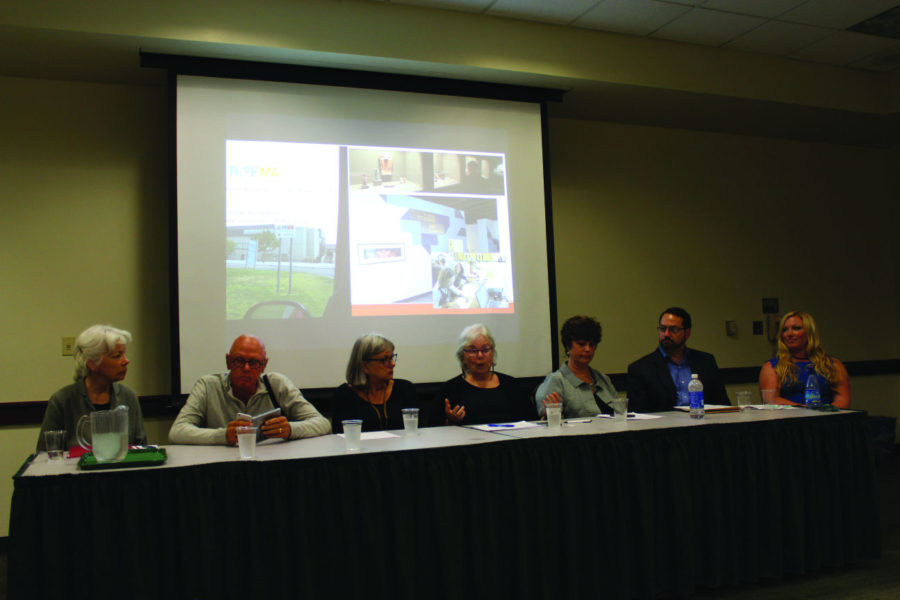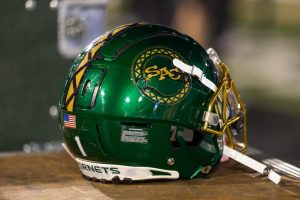Panelists discuss art on campus
Panelists answer a question of whether Sac State should open a a new museum at “Treasure Revealed” on Thursday, Sept. 17, 2015.
September 25, 2015
Last Thursday, the Department of Art hold a panel discussion formed by seven panelists where they discussed the campus’ art treasure collections that the department hold.
As Sacramento State students and faculty walk through the campus they are surrounded by art.
As they walk through the library or the union, they can see art: pictures, sculptures and paintings; just to mention a few. Without knowing, they are being expose to history-through art pieces.
Through time there have been different types of events that have shaped who we are as human being and what we have accomplished. History is here to remind us where we were and were we are now, but our history would be hard to understand if there were not any physical or visual illustration that show us how life was.
Art, is the key element in human history that actually prove human evolution. It is also what manifest the human process in history. From tablet stones to painting, poems and music, art is what gives our society a sense of history and heritage to hold on to.
Inventiveness, Knowledge, imagination and creativity are just a few of the elements that represent us as society and are well manifested in art.
Few people realize the historic and valuable context that surrounds them here on campus. Even fewer realize all the hard work done by the Department of Art to preserve the art while providing the multicultural environment that all students and faculty enjoy here at the campus.
Through the leadership of Elaine O’Brien, manager of the art department collection, the panelists, each with overseeing one of six different art collections: The University Library Archive and Special Collections, Tsakopoulos Hellenic Collection, University Union, School of the Arts, and The departments of Anthropology Art, talked about their individual treasures and issues that each collection faces.
Each of the panelist agree that the purpose of each art pieces in their collection is to be used as teaching tools for students to be engage in learning the material and do researchon individuals artists.
Over all, the essence of what each collection wants, is to provide and make art accessible as well as foster more awareness to the public in general; through events, lectures and exhibitions.
“One of our goal is to ensure that the art works are visible to the public on campus but also visible to the public online,” said University Union Gallery Studio Manager Rebecca Voorhees. Many of the collection are thinking or are setting websites to show their art pieces online.
In some collections the creation of a web site can open an eye to the public to some of the art pieces that are not available due to their historic valuable context. An example are the documents, manuscripts and photographs of the abrogation that the Special Collection and University Archives holds of the imprisonment suffered by the Japanese Americans during World War II.
Sheila O’Neill, Emerita Librarian and former head of the Department of Special Collection and University Archives, illustrated that some archives held under her collection are valuable because they record the historical cultural and environmental movements.
The collection holds “Some images that reflect the past and the present and conciseness of those communities about their past and their present,” said O’Neill.
As many of the panelists pointed out, one of the reason why some art, such as the Tsakopoulos Hellenic Collection and the Japanese American Archival collection are not always open to the public is because of security issues.
George Paganelis, Curator of the Tsakopoulos Hellenic Collection, explained that the department avoids placing original art on display at the third floor of the campus library because it is not considered a secured space.
The University Library Gallery tries to place pieces that they collect in public spaces around the campus, but since there is not much security or spaces, the library is not accepting new art donations
“We are no longer going to accept gifts, because we do not have a way to take care of it, we do not have a way to storage it, and we do not have a budget to back them up,” said Phil Hitchcock, Director of the University Library Gallery.
Many great art collections have been turned down in the past three weeks, because the department can no longer take care of new art pieces.
“I do not think you can be responsible to accept gifts, if you cannot accept them in the proper environment,” said Hitchcock.
Space and security is the big issue that most of the collections faced, as a result most collections cannot expose their art pieces all the time to the public.
The campus has hundreds of art pieces that decorate the campus to show its diversity, but there are thousands of art pieces hidden that hide the endured, creativity and diversity that is human history,
Without a safe and specific place to display art pieces from all the collections, the department feels that students and the community are missing the experience to view historical context that define their heritages as a community.





























































































































